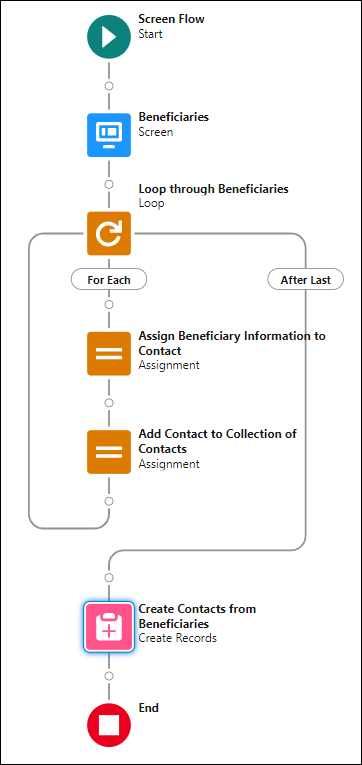At SOLVD, we’ve made it our mission to equip businesses with the tools and knowledge they need to succeed in the digital age. With its wide range of powerful features and capabilities, Salesforce has become a staple for organizations looking to streamline their operations and drive growth. One such feature that we’re excited to explore in this blog post is the Salesforce Repeater Component.
Imagine you’re building a flow that requires users to input information about multiple beneficiaries on an insurance policy. Traditionally, you would need to add individual components for each beneficiary, resulting in a cluttered and time-consuming process. This is where the Repeater Component comes in.
Set to be available in the Spring ‘24 Release, the Repeater Component allows you to create a set of fields or components that can be duplicated at runtime. In our insurance policy example, users can now add as many beneficiaries as needed, without having to create separate screens or components. This not only improves the user experience but also simplifies the flow’s design and execution.
1. Enhanced User Experience: By allowing users to dynamically add or remove components, the Repeater Component empowers them with more flexibility and control. They can now input information in a way that feels natural and intuitive, leading to a more seamless experience.
2. Streamlined Flow Design: Streamlining the flow design process is crucial for both administrators and end-users. With the Repeater Component, admins can create more concise and visually appealing flows, while users can navigate through screens more efficiently. It’s a win-win.
Now that we understand the significance and benefits of the Repeater Component, here are some actionable tips to help you make the most of this feature:
1. Plan and Prototype: Before diving into the development process, take the time to plan out your flow and create a prototype. This will help you identify any potential challenges or improvements early on.
2. Leverage Dynamic Labels: The Repeater Component allows you to dynamically set labels for each instance. Take advantage of this by providing descriptive labels that adapt based on user inputs or selections.
3. Data Collection Best Practices: Make sure to store the output of the Repeater Component in a collection variable. To do this, you’ll want to loop through the Repeater Component’s output, add the output to a collection variable, then run the appropriate DML operation on the collection (example below).

4. Testing and Iteration: As with any Salesforce feature, thorough testing is key. Take the time to test your flow with different scenarios and user inputs, and be prepared to make adjustments as needed.


From my initial call with Spencer through project implementation with John and Evan, my experience with the SOLVD team was excellent. They were quick to understand our business needs, clear when explaining the reasoning behind proposed solutions, transparent when reporting on progress and timeline, and all around enjoyable to work with. Would highly recommend and looking forward to continue working with them in the future!

SOLVD was very straight forward with everything needed to complete the project. No surprises, no issues, and cost was aligned with the estimate. They made implementation easy and quick.

As a rule, I'm pretty stingy with my recommendations. So it's a pleasure for me to recommend Solvd as a top-flight Salesforce consultancy. Solvd recently led our company's conversion to the Lightning interface and did it on time, on budget and made it easy for me and my team. I know I'll use their services again, and am confident they can do the same for you.

Start Automating Today
